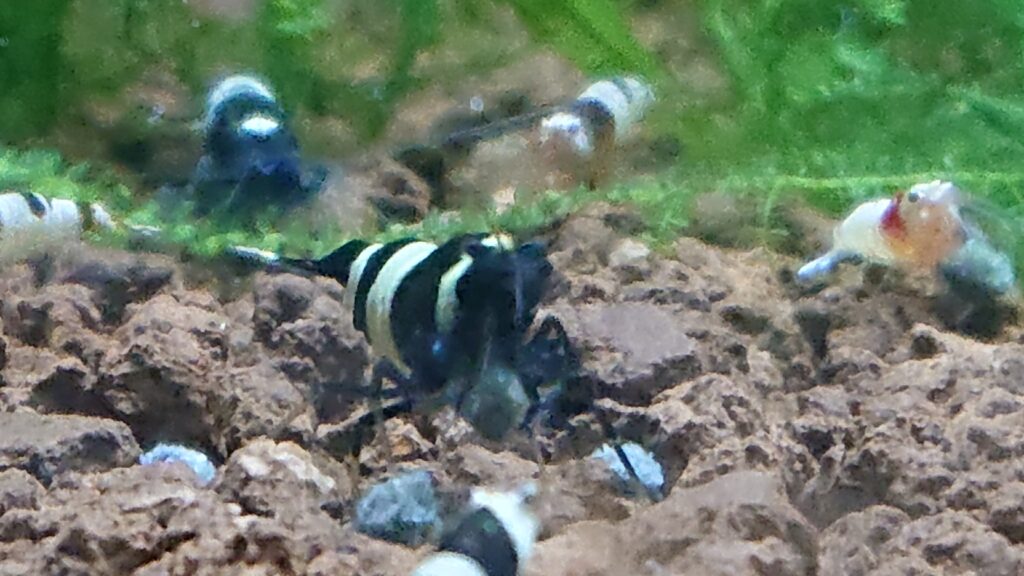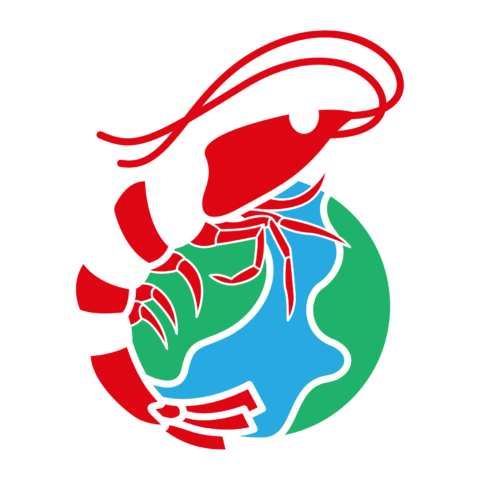Taiwan Bee shrimp or Caridina cantonensis, also known as the blue bolt, king kong, red wine, red ruby, and panda, is no longer the genetically fragile species as it originally was. However, the relatively resilient Taiwan Bee shrimp available today still has many unique demands to thrive.
Taiwan Bee shrimp is significantly hard to keep in a tank or aquarium if you fail to ensure the right conditions, including water parameters, substrate, hardscape, and cohabitants. However, planning and proactive interventions can help this spectacular species thrive.
Don’t introduce Taiwan Bee shrimp to your fish tank unless you’ve prepared it precisely per the prerequisites. You can’t reverse engineer the water parameters or respond with the benefit of hindsight. Read on to keep Taiwan Bee shrimps alive and enable the little wonders to thrive.

Facts To Know Before Keeping Taiwan Bee Shrimp in a Fish Tank
Taiwan Bee shrimp won’t survive in a typical freshwater fish tank as it needs slightly acidic soft water. In addition to the pH, you must stringently maintain the levels of GH or general hardness, KH or carbonate hardness, TDS or total dissolved solids, feed, algae, and microbial growth.
You Should Use Distilled or RO/DI Water for Your Taiwan Bee Shrimp Tank
Taiwan Bee shrimps need soft water with a pH of 6.2 to 6.5. Generally, tap water has a pH of ~7.5. Most filters in American homes don’t alter this pH, so you still have slightly alkaline tap water, albeit cleaner. Thus, you need to use distilled or reverse osmosis and deionized water.
Naturally, you can’t add Taiwan Bee shrimp in a fish tank or aquarium that’s already filled with tap water. Even if you manage to bring the pH down, there’ll be some minerals, total dissolved solids, and perhaps bacterial bloom. All these pose a threat to the shrimps, especially babies.
Taiwan Bee Shrimp Need an Active Substrate in the Tank
Caridina cantonensis or Taiwan Bee shrimp need an active substrate. Also known as buffering substrate, an active soil lowers the pH level of distilled or reverse osmosis deionized water and interacts with the total dissolved solids, effectively reducing those contents in the tank.
You can’t use regular or inert substrate to grow Taiwan Bee shrimp, whether sand or gravel. Interestingly, as it’s marketed, volcanic, buffering, active, or shrimp soil isn’t for all species. For instance, Neocaridina shrimp won’t thrive on such substrates as they need higher pH.
Watch this YouTube video to know more about buffering substrates for Taiwan Bee shrimp:
You Should Begin With 0 Total Dissolved Solids and Restrict TDS to 120
Your fish tank should have 0 TDS or total dissolved solids. The TDS level can be a maximum of 150 after you add and keep Taiwan Bee shrimps in the tank for a few days. However, aim for at the most 120, as getting closer to 140 or 150 on the TDS meter will adversely affect the babies.
Measure the total dissolved solids periodically using tools such as the Luoleina Digital TDS Meter (available on Amazon.com). This TDS tester also measures electrical conductivity (EC) and temperatures in both Fahrenheit and Celsius. Thus, anything that can substantially increase the TDS in the tank is a threat to your Taiwan Bee shrimp, which is one of the reasons why they’re so hard to keep.
Your Tank Needs ~5 General Hardness and Carbonate Hardness at <2
Your fish tank water should have a maximum general hardness of 5, measured as dGH or °GH. Also, the carbonate hardness or KH should ideally be 0 and a maximum of 2. Thus, you have to measure pH, GH, and KH regularly to maintain the water parameters for Taiwan Bee shrimps.
You’ll need tools such as the API Test Strips (available on Amazon.com) to know the variety of water parameters. Available in various counts, each of these strips can test pH, GH, KH, NO2 (nitrite), and NO3 (nitrate) in your fish tank.
Now, imagine how hard it is to maintain these parameters with many shrimps, fish, and plants in your aquarium. All cohabitants in the tank must suit the parameters and vice versa.
A Taiwan Bee Shrimp Tank Needs Hardscape, Algae, and Plants
Taiwan Bee shrimp hide when they molt. You need to provide aquatic plants, ferns, mosses, and hardscape, such as driftwood and rocks or stones with holes so that the babies can seek refuge in them after shedding their exoskeleton. Shrimps molt several times during their lives.
Also, you need driftwood, rocks or stones, and plants to facilitate algae growth. Taiwan Bee shrimp love to graze and feed on the algae. Furthermore, you can’t keep Taiwan Bee shrimp in a tank with other fish that can be potential predators, including the likes of clownfish.
Helpfull post:
Final Thoughts
Keeping Taiwan Bee shrimps is easy if you can get an exclusive tank with an active substrate, hardscape, and plants, maintain the water parameters, and avoid any fish that can prey on the little wonders. Else, Caridina cantonensis won’t thrive, and the babies may die prematurely.
Sources
- Mad Shrimp: 3 Things To Know About Taiwan Bee Shrimp
- Encyclo Fish: Caridina cantonensis – Taiwan Bee
- Healthline: What pH Should My Drinking Water Be?
- NIH: The pH of Water from Various Sources
- Aquarium Breeder: Bee Shrimp – Detailed Guide: Care, Diet, and Breeding
- YouTube: BUFFERING SUBSTRATE & SHRIMP
Recent Posts
Buy Now Beginners Guide Freshwater Shrimpcare ... Dive into the miniature world of freshwater shrimp care with our comprehensive e-book! 🦐🌿 Are you fascinated by the idea of...
Cherry shrimp are popular freshwater aquarium pets that are easy to care for, colorful, and entertaining to watch. They are native to Taiwan and belong to the atyidae family. Cherry shrimp are small,...

